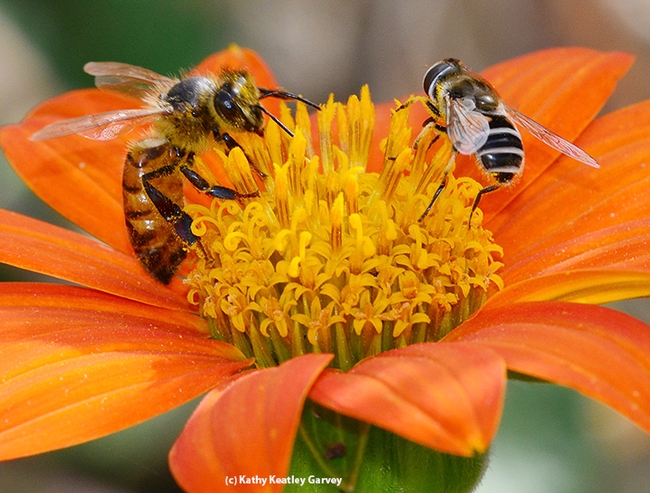Will all the pollinators please stand up!
Or do a fly-by like the Blue Angels or a crawl-by like babies competing in a diaper derby.
Bees--there are more than 4000 of them in North America--are the main pollinators, but don't overlook butterflies, beetles, birds, bats and moths.
And flies.
Flies?
Yes, flies.
Here's proof positive that flies can pollinate. If you look closely at this little bee fly on a Mexican sunflower (Tithonia), you'll see that it has just grabbed some pollen. It's a member of the genus, Villa, and family, Bombyliidae, according to fly expert Martin Hauser of the California Department of Food and Agriculture.
Many folks mistake flies for bees. Look through any stock photo catalog or macro insect images on Flickr or a Facebook page and you'll often see hover flies, bee flies and other flies identified as bees.
Three of the easiest ways to differentiate a fly from a bee:
- A fly has one set of wings. A bee has two sets.
- A fly has short, stubby antennae. A honey bee doesn't.
- A fly has no corbicula or pollen basket. A honey bee (worker bee) does.
Welcome to the Pollination Nation!
For more information on bee flies, see BugGuide.net. For syrphids, aka flower flies or hover flies, read the UC Statewide Integrated Pest Management's information on managing pests or read entomologist Robert Bugg's free downloadable PDF on the UC ANR website, Flower Flies (Syrphidae) and Other Biological Control Agents for Aphids (Publication No. 8285).
Attached Images:

